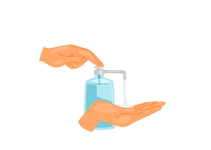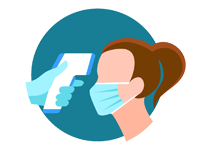Clofarabine
Introduction
Clofarabine is a chemotherapy medication primarily used to treat specific types of blood cancer, including relapsed or refractory acute lymphoblastic leukemia (ALL) in pediatric patients. It belongs to a class of drugs called purine nucleoside antimetabolites, which interfere with the DNA synthesis in cancer cells, leading to their destruction. Clofarabine is typically administered in hospital settings under the supervision of healthcare professionals due to its strong effects and potential side effects. It plays a crucial role in cancer therapy, especially when other treatments have failed or when rapid cancer progression must be controlled.
Medicine Not Available for Clofarabine
Uses of Clofarabine
- Treatment of relapsed or refractory acute lymphoblastic leukemia (ALL)
- Used in pediatric patients aged 1 to 21 years after at least two prior regimens
- May be used in clinical settings for other types of leukemia under specialist guidance
How Clofarabine Works
Clofarabine works by inhibiting DNA synthesis in rapidly dividing cells like cancer cells. It gets incorporated into DNA and RNA, disrupting their function and triggering cell death. This selective action makes it effective in targeting leukemia cells while sparing normal cells to some extent.
Benefits of Clofarabine
- Effective for relapsed or treatment-resistant leukemia
- Targets cancer cells specifically, minimizing damage to normal tissues
- Can be part of combination therapy to increase treatment success
- Available in injectable form for controlled hospital administration
How to Take Clofarabine
Clofarabine is given as an intravenous (IV) infusion over a set period, usually in a hospital setting. Dosage is based on body surface area and medical condition. It's typically administered once daily for five consecutive days in a 2-to-6-week cycle. Always follow the oncologist's instructions strictly.
Type of Dosage Available
- Intravenous (IV) Injection
Side Effects of Clofarabine
- Common: Nausea, vomiting, fever, fatigue, rash, diarrhea
- Severe: Low blood cell counts, liver toxicity, kidney problems, infections, capillary leak syndrome
- Others: Mouth sores, headache, elevated liver enzymes
Safety Advice
- Not recommended during pregnancy or breastfeeding
- Monitor liver, kidney, and blood function regularly
- Avoid live vaccines during treatment
- Ensure proper hydration before and after administration
- Report any signs of infection or unusual bleeding immediately
Frequently Asked Questions (FAQs)
Q: What is Clofarabine used for?
A: Clofarabine is used to treat relapsed or refractory acute lymphoblastic leukemia (ALL), especially in children and young adults.
Q: How is Clofarabine administered?
A: It is given as an intravenous infusion in a hospital or clinical setting.
Q: Are there any side effects of Clofarabine?
A: Yes, common side effects include nausea, fever, low blood counts, and potential liver or kidney issues.
Q: Is Clofarabine safe during pregnancy?
A: No, it should be avoided during pregnancy and breastfeeding due to potential harm to the baby.
Q: Can Clofarabine be used in adults?
A: Though primarily approved for pediatric use, it may be used in adults under specialist guidance for certain conditions.
Download India's most affordable pharmacy app
- Compare with medicine prices
- Save upto 90% on your medicine bills

Temperature Controlled storage and delivery

Regular Sanitization

Disinfected Packaging

















 Added!
Added!